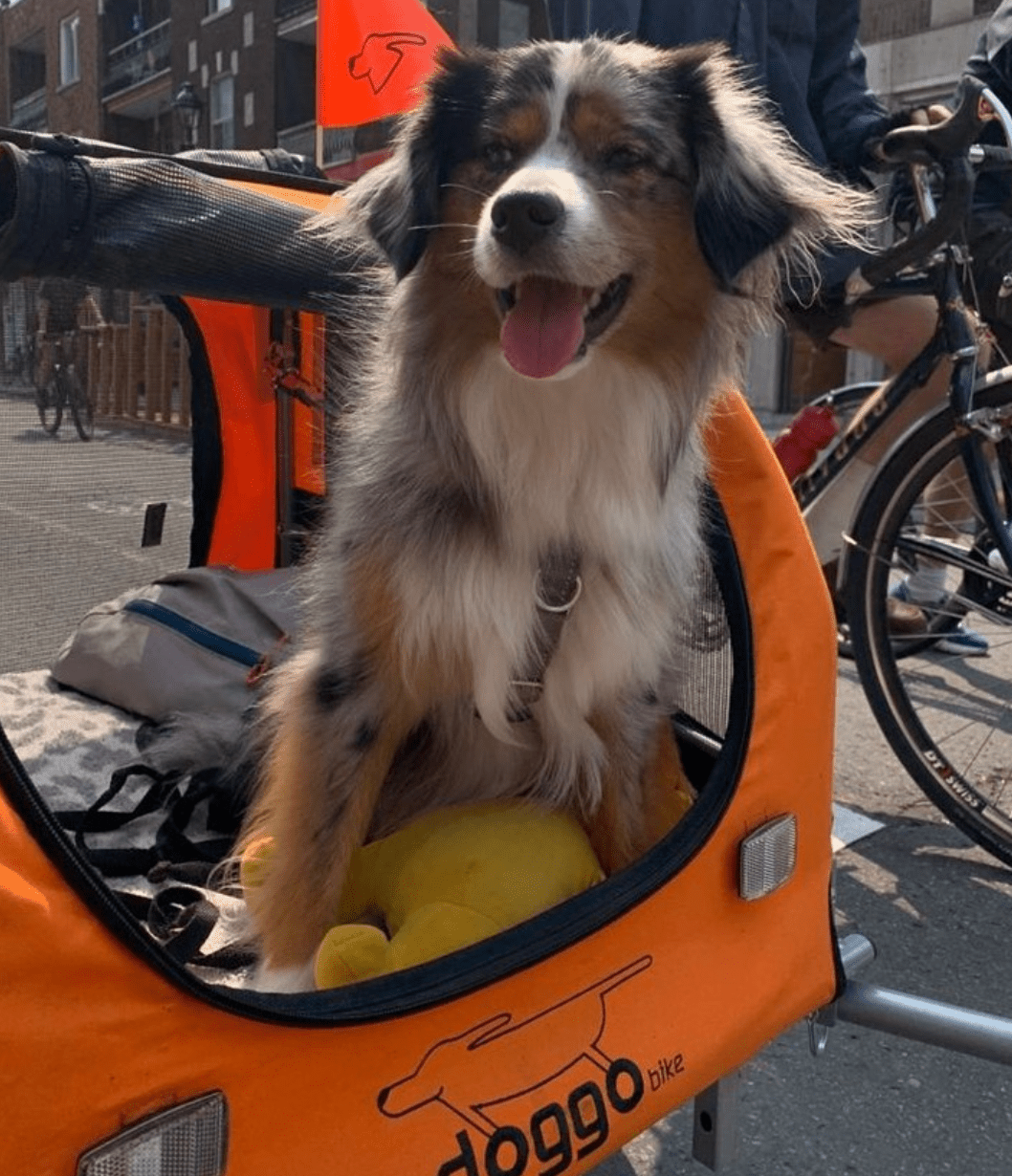How to Choose and When to Use the Doggo Bike® Trailer for Your Dog

Cycling with your dog can be a delightful experience, offering both exercise and bonding opportunities. However, not all dogs can keep pace with a bicycle, making a dog bike trailer an excellent solution. This article will guide you through the process of selecting the right bike trailer for your canine companion and determining the appropriate times to use it.
Understanding the Need for a Dog Bike Trailer
Before diving into the selection process, it's essential to understand when a bike trailer is beneficial:
-
Puppies and Young Dogs: Their developing joints may not handle long runs alongside a bike.
-
Senior Dogs: Aging dogs might lack the stamina or have health issues that prevent extended physical activity.
-
Small Breeds: Their shorter legs make it challenging to keep up with a bicycle's speed.
-
Injured or Recovering Dogs: Dogs recuperating from surgeries or injuries still need fresh air and stimulation without strenuous activity.
-
Brachycephalic Breeds: Breeds like Bulldogs or Pugs can struggle with breathing during intense exercise.
In these scenarios, a bike trailer ensures your dog can accompany you without compromising their health or safety.

Key Factors to Consider When Choosing a Dog Bike Trailer
-
Size and Capacity
Ensure the trailer comfortably accommodates your dog's size and weight. They should have enough space to sit, lie down, and turn around. For instance, the Doggo Bike™ trailer is designed to support dogs up to 100 lbs (45 kg), catering to small, medium, and large breeds.
-
Durability and Materials
Opt for trailers constructed from robust materials like aluminum or steel. Aluminum frames are lightweight but can be prone to cracking under heavy use, whereas steel frames offer enhanced durability but add weight. Additionally, ensure the exterior panels are water-resistant to protect your dog from the elements.
-
Wheel Size and Type
Larger wheels, typically around 20 inches in diameter, provide a smoother ride by reducing rolling resistance. Inflatable tires with aluminum spokes are preferable for durability and comfort.
-
Safety Features
Prioritize trailers equipped with safety features such as reflectors, safety flags, interior leash ties, and parking brakes. These elements enhance visibility, prevent accidental escapes, and ensure the trailer remains stationary during loading and unloading.
-
Ventilation and Comfort
Adequate ventilation is crucial to prevent overheating. Look for trailers with mesh windows and, if possible, a sunroof that allows your dog to enjoy the breeze and scenery. A removable floor can also facilitate easy cleaning.
-
Ease of Use
The trailer should be easy to assemble, attach to your bike, and fold for storage. Features like a low center of gravity enhance stability, and multiple entry points can simplify loading and unloading your dog.
-
Multi-Functionality
Some trailers, like the Doggo Bike™ trailer, come with a stroller conversion kit, allowing you to use them as a stroller or jogger. This versatility can be particularly beneficial for dogs with reduced mobility or senior dogs.
-
Storage Options
Additional storage pockets can be handy for carrying essentials like water bottles, leashes, or treats. While not a necessity, they add convenience to your rides.
Introducing Your Dog to the Bike Trailer
A positive introduction ensures your dog feels comfortable and enjoys the experience:
-
Familiarization: Place the trailer in your home, allowing your dog to explore it at their own pace. Encourage them with treats and praise when they show interest.
-
Encouraging Entry: Use treats to lure your dog into the trailer, allowing them to enter and exit freely without pressure.
-
Short Sessions: Once they're comfortable entering, close the trailer for short periods, gradually increasing the duration.
-
Adding Movement: Gently move the trailer indoors to acclimate your dog to the sensation.
-
Outdoor Introduction: Take the trailer outside, allowing your dog to experience the new environment while inside.
-
First Ride: Start with short, slow rides, gradually increasing speed and distance as your dog becomes more comfortable.
The Doggo Bike® trailer offers a step-by-step positive reinforcement training guide to assist in this process.

When to Use a Bike Trailer for Your Dog
Beyond the scenarios mentioned earlier, consider using a bike trailer in the following situations:
-
Long-Distance Rides: If planning a lengthy ride, a trailer allows your dog to rest when they tire.
-
Urban Areas: In bustling city environments, a trailer can protect your dog from traffic and crowded sidewalks.
-
Extreme Weather: On particularly hot or cold days, a trailer provides shelter from harsh conditions.
-
Multi-Dog Households: If you have multiple dogs with varying energy levels, a trailer ensures everyone can join the outing without overexertion.
Leave a comment